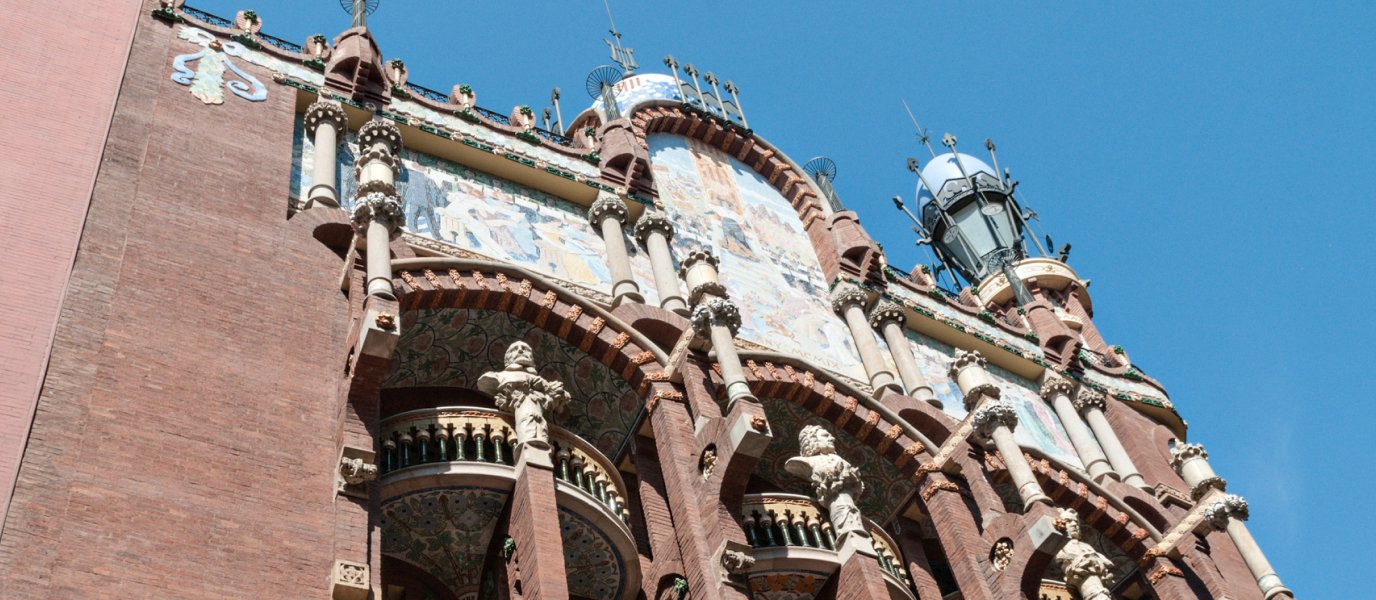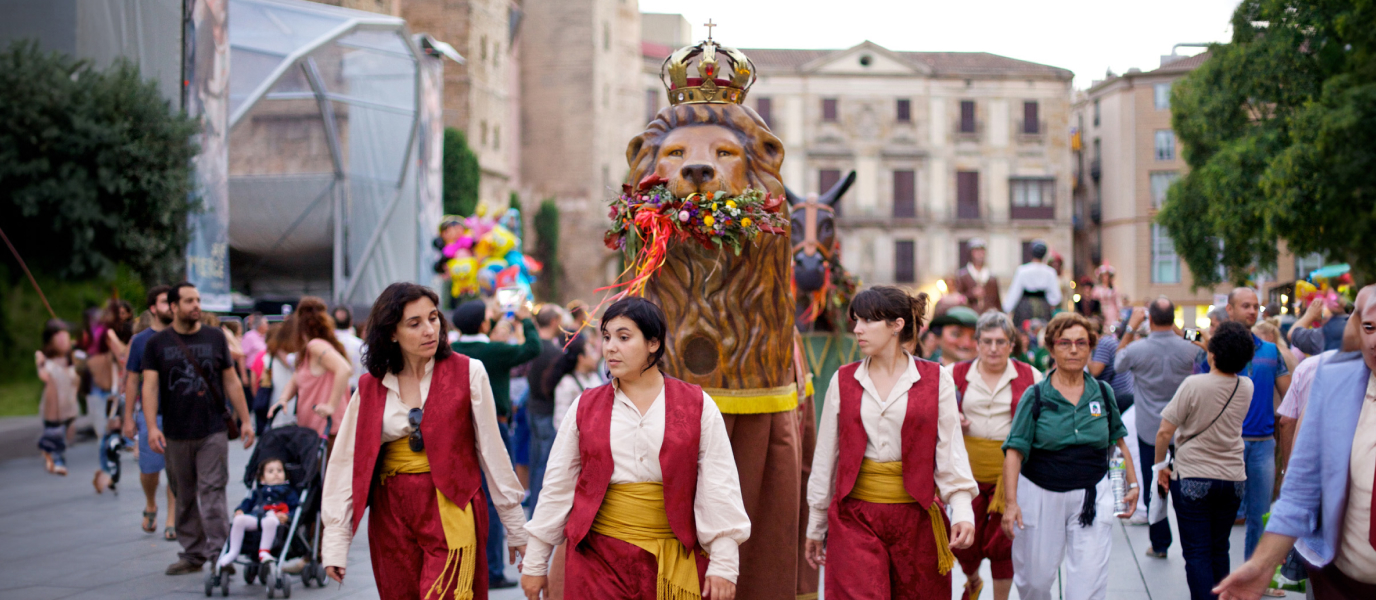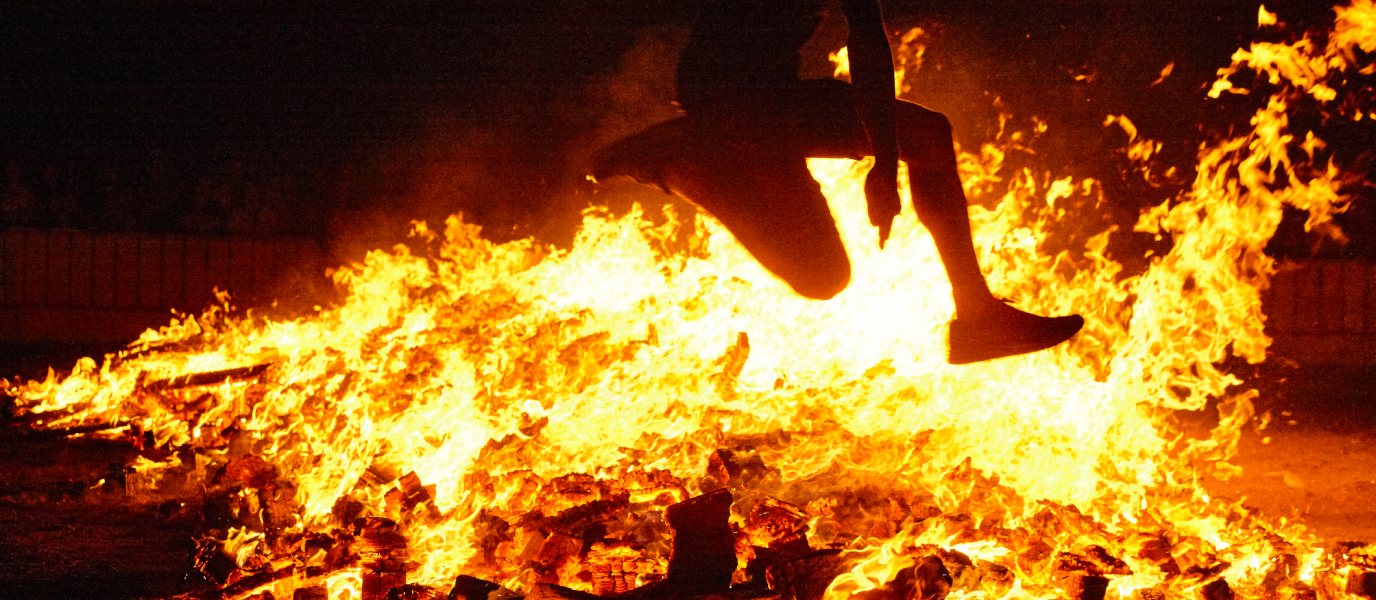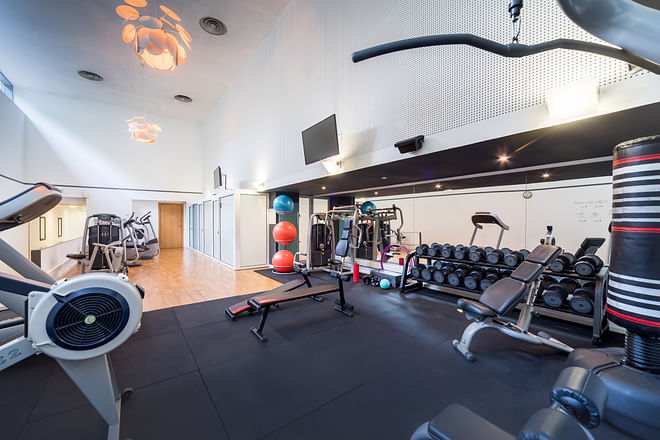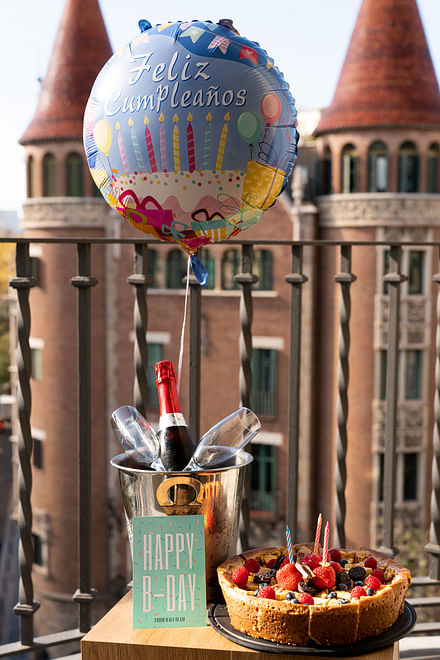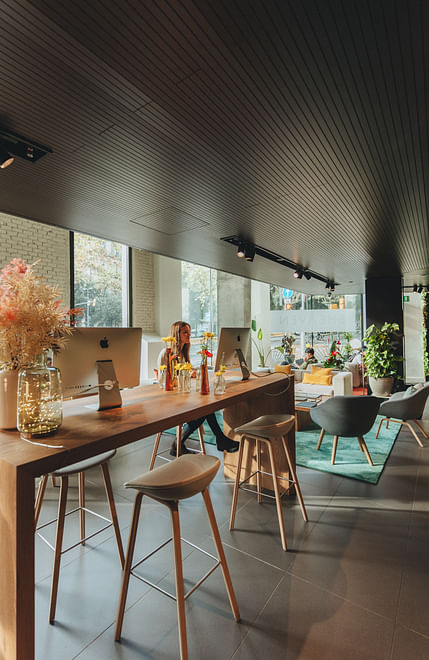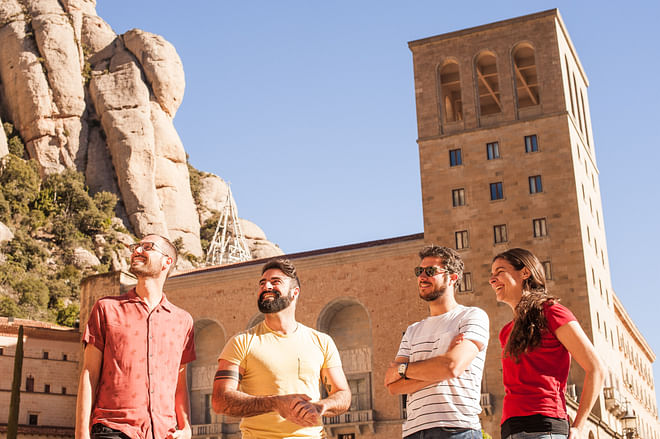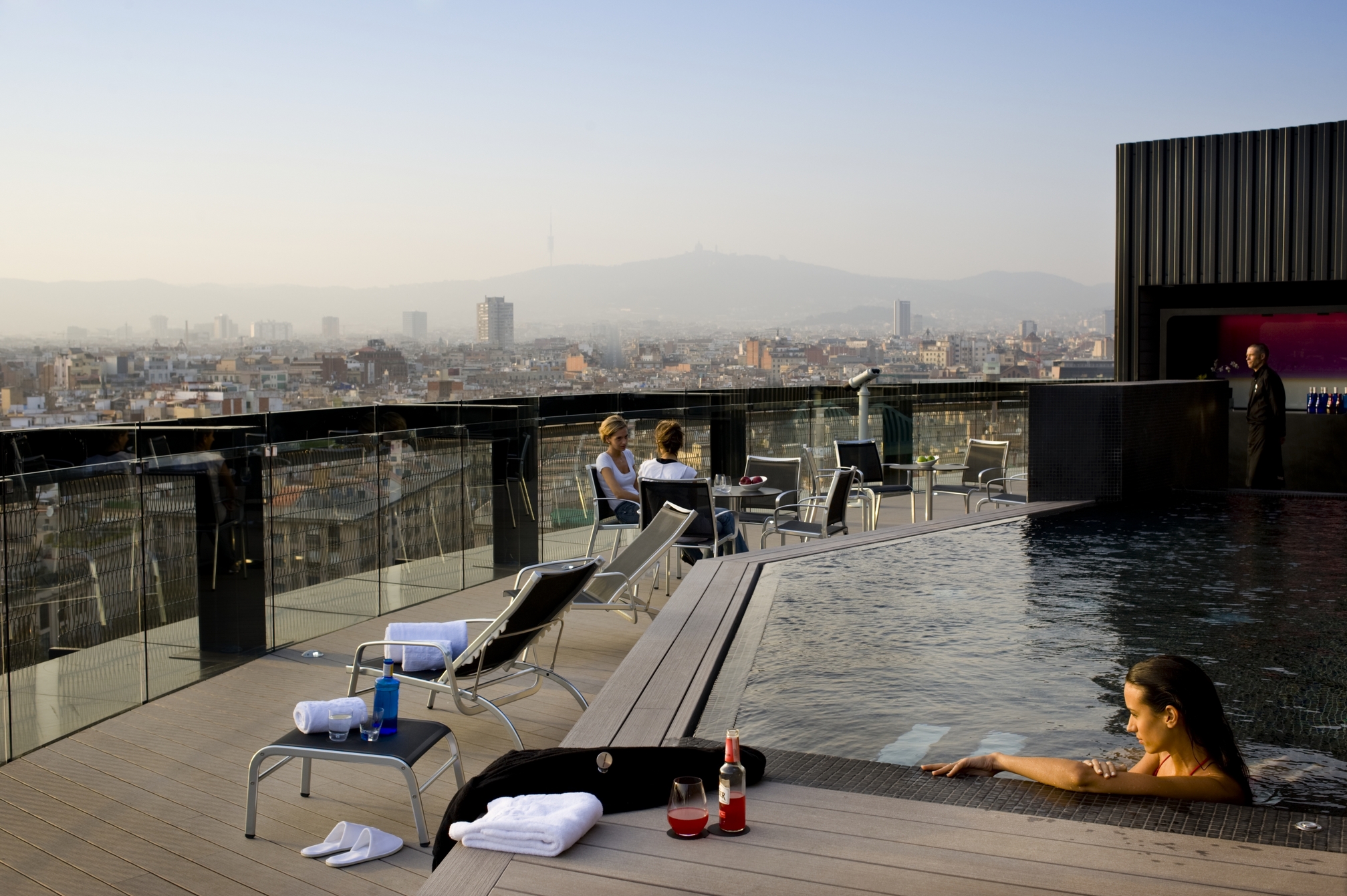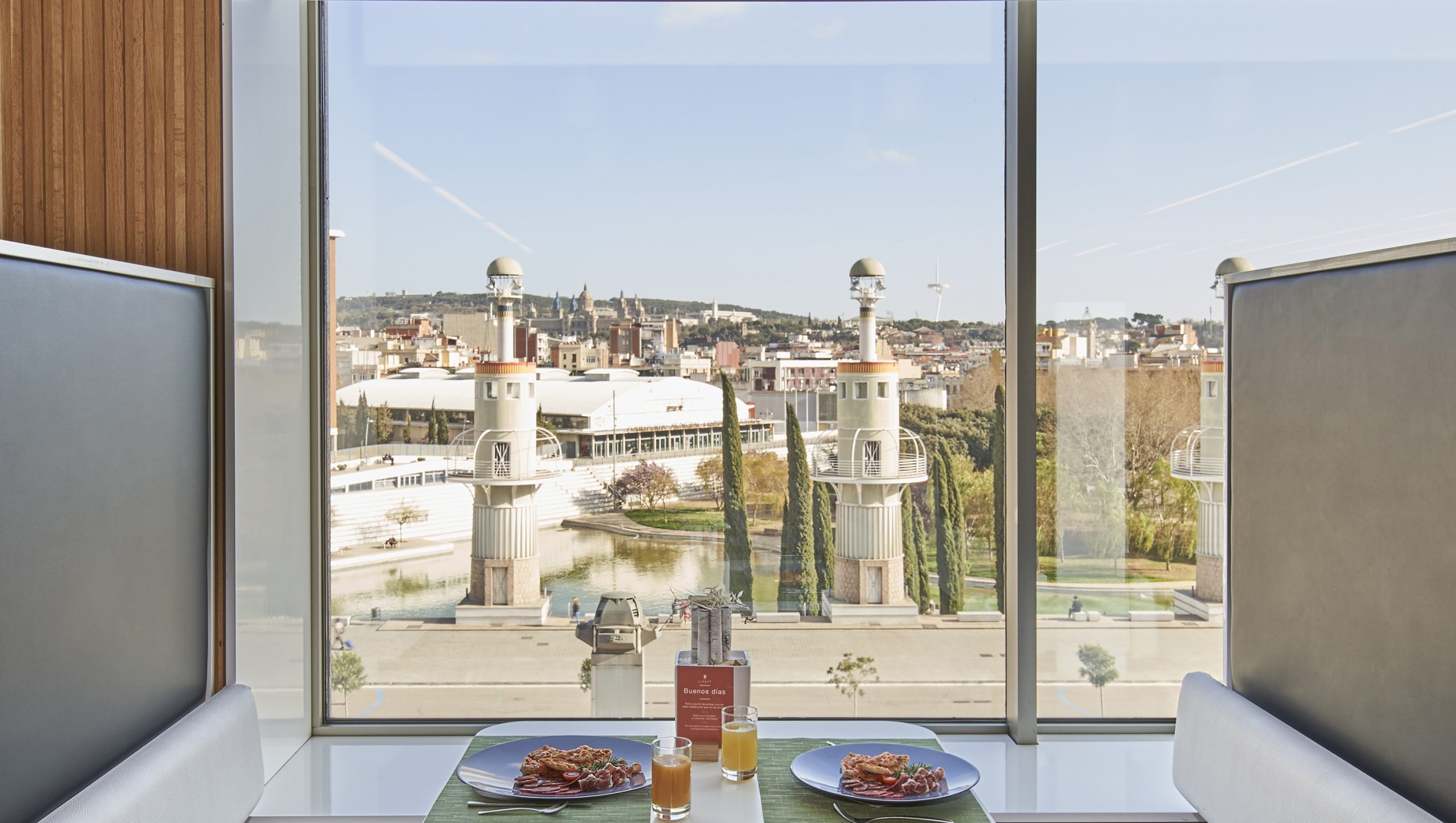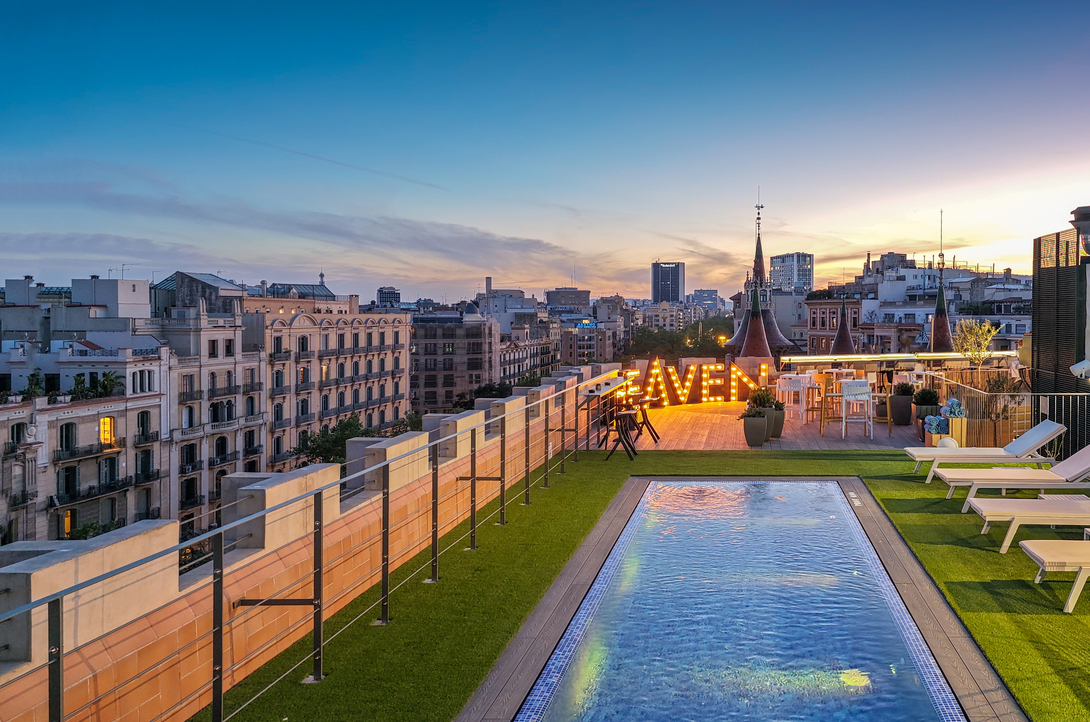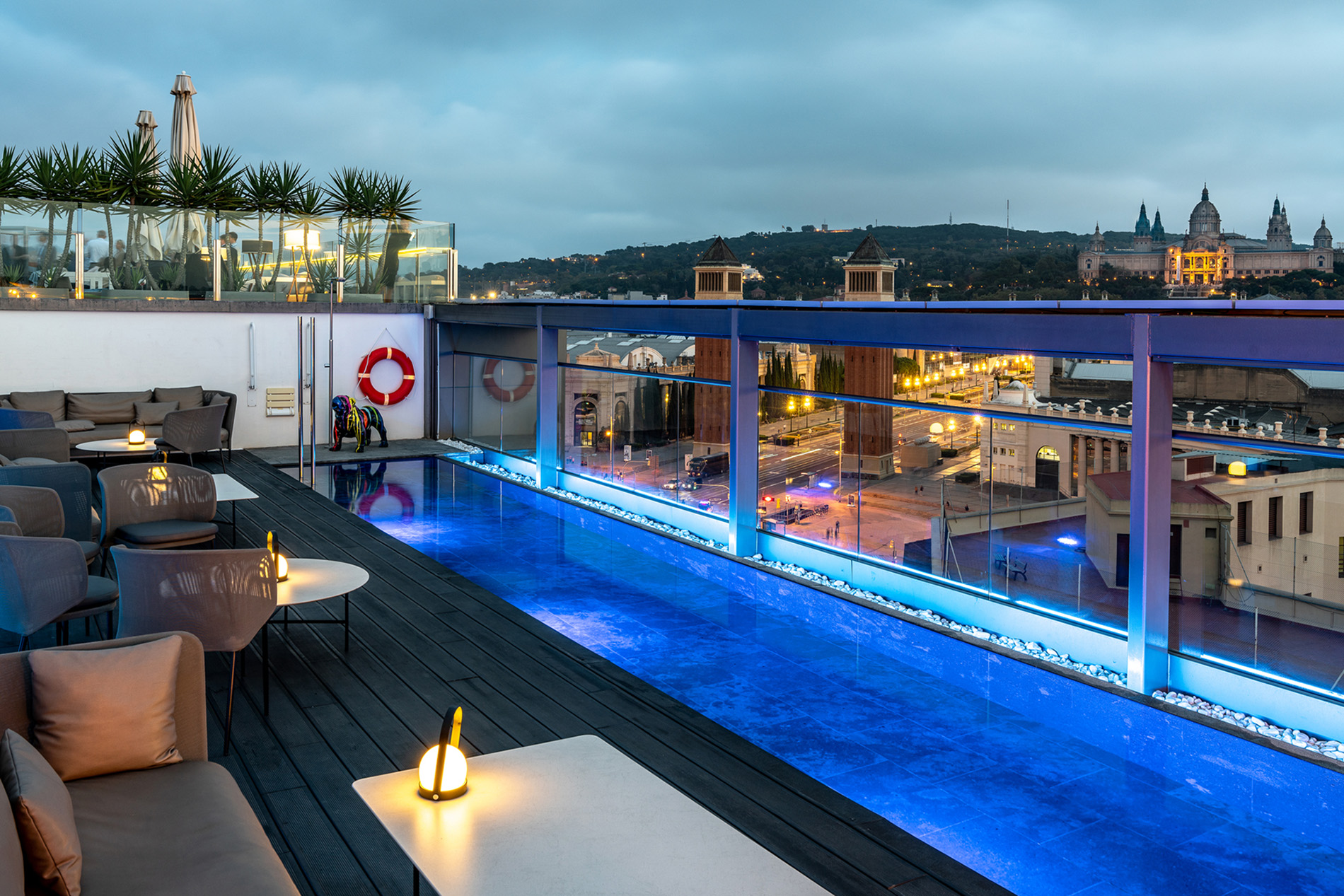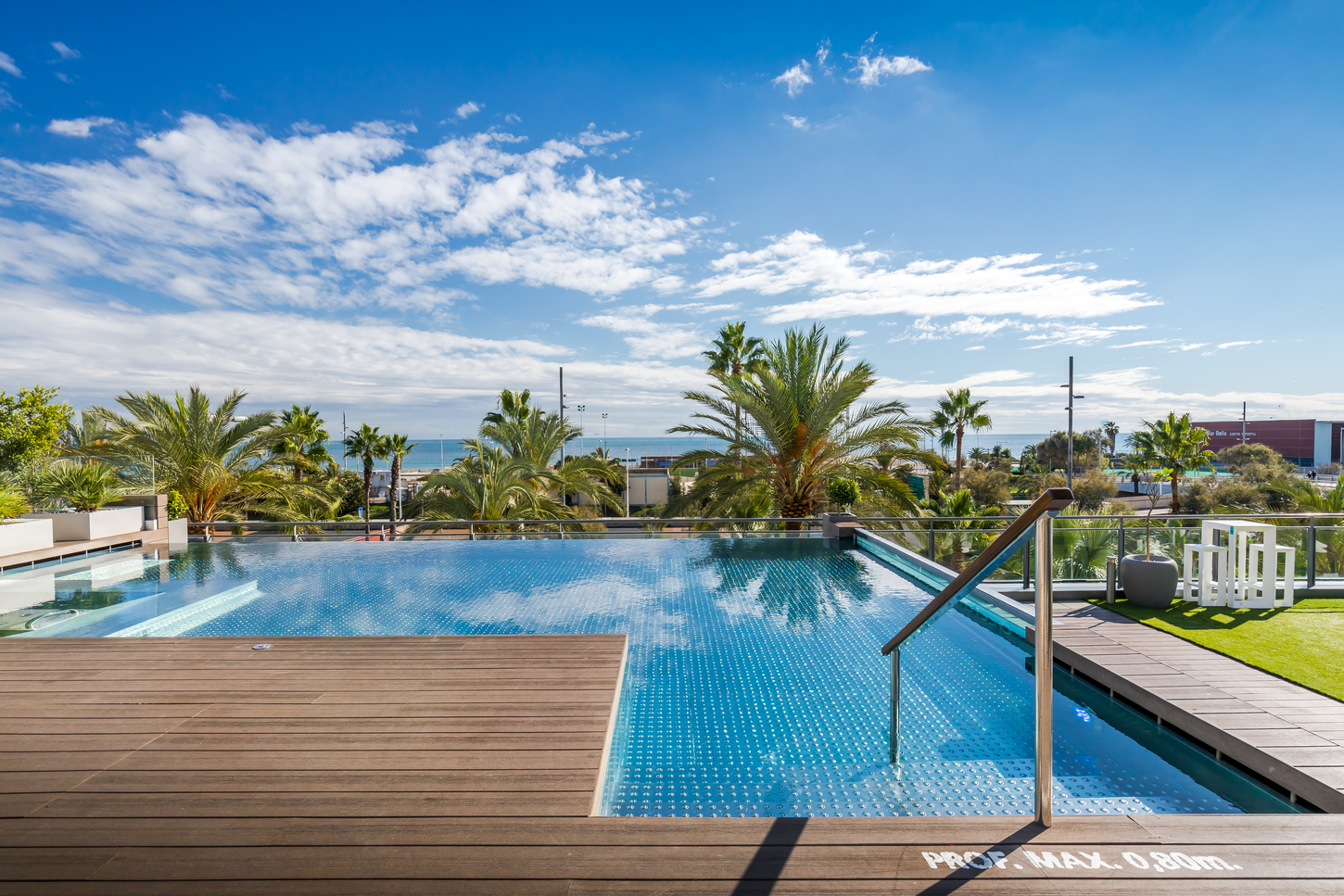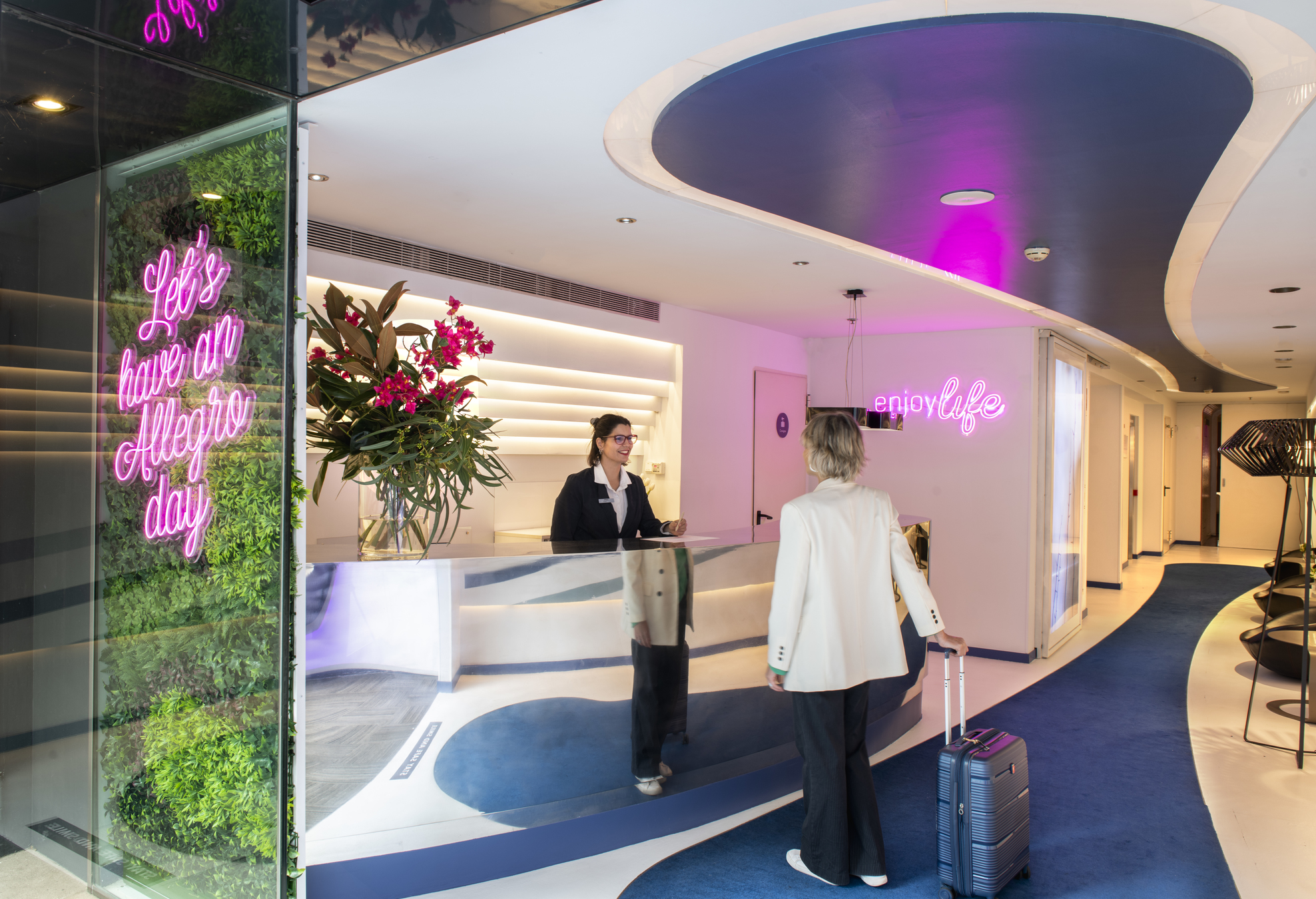Colourful stained-glass windows, elegant sculptures, exquisite mosaics and an architectural style employed to enhance the enjoyment of music… This Barcelona auditorium is the place where all the arts join forces to provide the audience with a complete sensory experience. The Palau de la Música Catalana is far more than just a concert hall.
The significance of the Palau de la Música for Barcelona
The main hall of the Palau de la Música is the scene that best captures the splendour of Modernist architecture; it simultaneously occupies the epicentre of Catalan social and cultural life. This comes as no surprise, as the Palau is the base of the Orfeó Català, a non-profit organisation founded in 1891 by Lluís Millet to promote Catalan culture—mainly in the sphere of music, and specifically of choral music.
The Palau de la Música edifice represents (along with the magnificent Hospital de Sant Pau) one of the masterpieces of the architect Lluís Domènech i Montaner, who worked in Barcelona at the same time that Gaudí was creating some of his most famous buildings, such as the Batlló and Milà houses. Other outstanding buildings designed by Domènech i Montaner include the Lleó i Morera house and the El Castell dels Tres Dragons restaurant (both located in Barcelona), and the Rull house, located in Reus.
Montaner built the palace between 1905 and 1908, using unconventional building materials; he created, for example, a metal structure which enabled him to design wide spans to admit light, both in the ceilings and in the façades. In addition, for the building’s decorative aspects, he drew on the skills of a broad group of collaborators. Among the most prominent of these were: Eusebi Arnau and Pau Gargallo, who created the groups of sculptures in the foyer; Miquel Blay, who sculpted the beautiful work on the building’s façade which welcomes visitors; Antoni Rigalt and Lluís Bru, respectively responsible for the stained glass windows and for the mosaics.
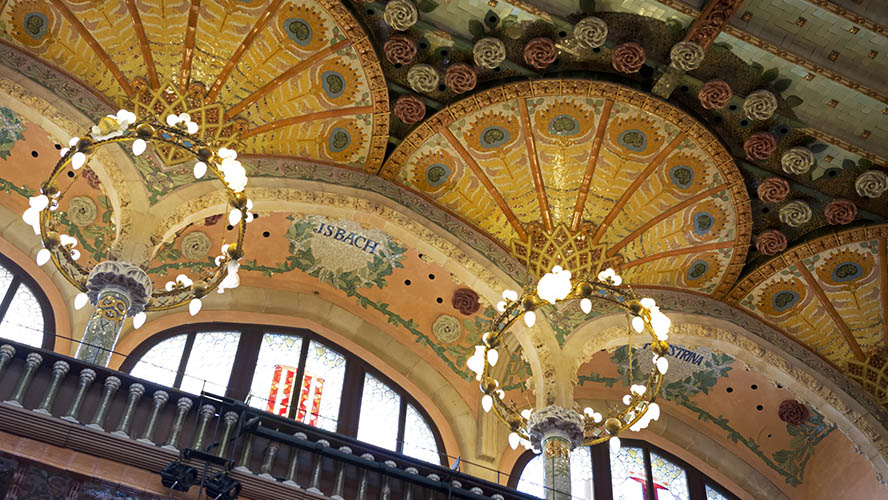
The highlights of the Palau de la Música Catalana
- The façade. The narrow streets of the neighbourhood of Ciutat Vella make it difficult to fully appreciate the main façade of the Palau de la Música, which was conceived as a true jewel of Modernism. So many features vie for the attention of the visitor, beginning with the wide, basket-handle arches that delineated access in the early twentieth century for pedestrians and carriages. The archways are separated by thick columns, in the shafts of which the original box offices are still visible. Another lovely attraction is the Miquel Blay sculpture La cançó popular catalana which stands on one corner of the building, like a stone altarpiece. However, the true decorative splendour of the building becomes apparent on the first floor, in the form of a magnificent double-colonnaded balcony. Each row has seven pillars with their shafts bedecked in mosaics and crowned with plant designs. Above can be seen busts of Palestrina, Beethoven and Bach—each surmounting a small balcony—and, lastly, the mosaics by Lluís Bru.
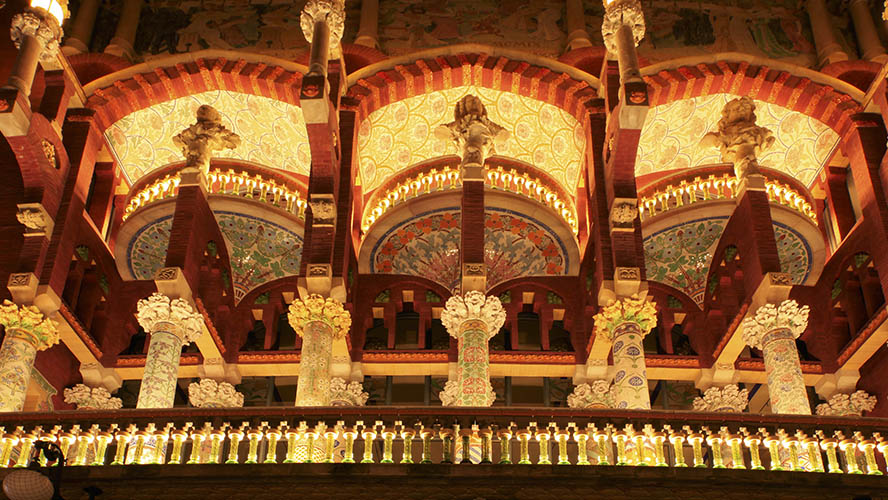
- The concert hall. The other key attraction of the Palau is its concert hall. The moment the visitor steps into this majestic auditorium, their attention is held rapt by the awe-inspiring skylight in the form of an inverted dome. As the sun’s rays enter through the dome, they are instantly transformed by the myriad colours of the stained glass windows. A number of sculptures portraying the muses adorn the walls of the concert hall. The most striking feature, however, is the variety of techniques employed in the creation of the whole, including sculpture, trencadís—a type of mosaic based on pieces of glazed ceramic—and a more detailed mosaic, made with small tiles.
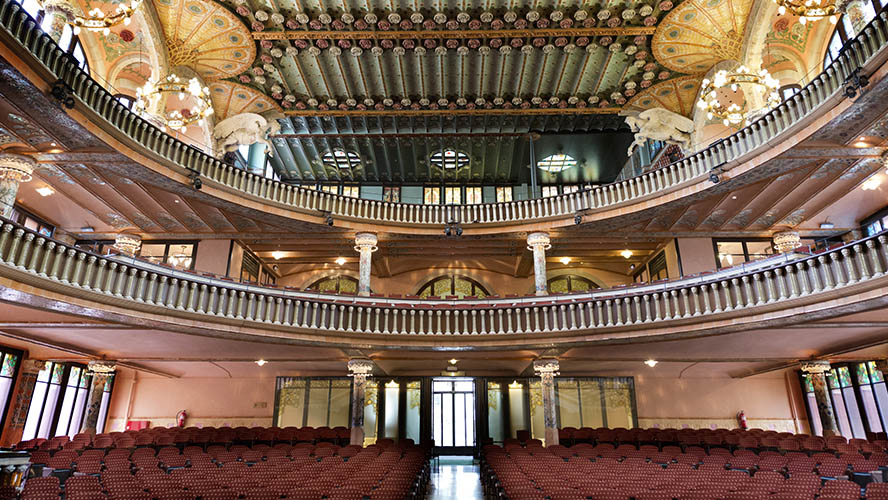
- Other features of interest. On visiting the Palau, it is immediately apparent that this is a building where attention has been lavished on every last detail. The attentive visitor will find aesthetic merit and Modernist harmony in corners that could easily be missed. For example on the balusters of the staircase, on the various lamps and on the furniture itself. For this reason, if the opportunity presents itself, it is worth stepping into the Orfeó Català rehearsal room and the Lluís Millet hall. Although less grandiose than the main auditorium, they still possess a particular delicacy and charm.
Palau de la Música: tours and concerts
There is no doubt that attending a concert at the Palau de la Música is the best way of getting to know a building through the purpose for which it was designed, and of appreciating the auditorium’s superb acoustics. Moreover, although it is an edifice dedicated to symphonic and choral music, the Palau de la Música’s programme offers a surprising variety of options, including jazz, flamenco and performances by singer-songwriters.
If this is your first visit to the Palau, it is recommended that you choose an event taking place in the large concert hall (and not in the Petit Palau), because although the latter has advanced technology and is ideal for chamber concerts, you will miss out on the wonderful Modernist setting of the main hall, the pearl of the Palau de la Música Catalana.
In any case, you can also see the Lluís Domènech i Montaner building on the visits—both independent and guided—organised by the institution. Various options are available, but all include the main halls and rooms of the complex: the Orfeó Català rehearsal room, the majestic main staircase, the Millet hall and the great concert hall. The tour takes approximately 55 minutes.
Don’t leave Barcelona without a visit to one of the key examples of the Catalan Modernist movement!





























































